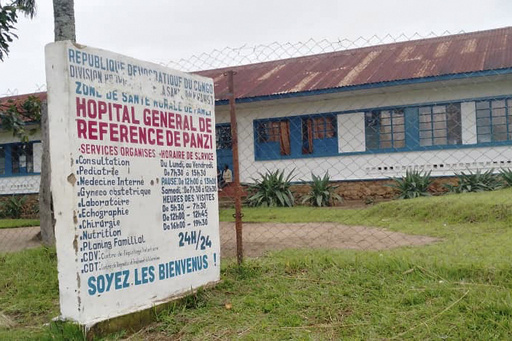DAKAR, Senegal — On Thursday, a man exhibiting symptoms of hemorrhagic fever passed away in western Congo, raising concerns among officials about a potential outbreak involving an unidentified virus, in addition to malaria, which has already resulted in numerous fatalities. Health authorities have reported that this outbreak has claimed the lives of at least 37 individuals.
Last week, health officials initially believed that malaria was the primary cause behind the recent flu-like illness sweeping through the region, noting that over 80% of the affected individuals had tested positive for the disease. However, the recent death of the man with hemorrhagic fever—symptoms that are not typically linked to malaria, which is caused by parasites—could suggest the likelihood of a viral infection as well.
The man passed away in the Panzi region of Kwango province, where the outbreak has primarily been observed. Ngashi Ngongo, an official from the Africa Center for Disease Control and Prevention, stated that this situation has led to a working theory that either “severe malaria on a background of malnutrition” or “a viral infection occurring alongside malaria” could be responsible for the outbreak.
Given that malaria is endemic to the Panzi area and the prevalence of malnutrition complicates the diagnoses, health authorities have reported 592 total cases, with 37 confirmed deaths linked to health facilities. This marks an increase of 65 new cases and 5 fatalities since the previous week, along with an additional 44 deaths identified within communities, which are currently under investigation.
From the analysis of samples taken from 51 individuals, it was revealed that 86% tested positive for malaria. Moreover, additional tests for other diseases are being conducted at national laboratories, with results anticipated next week, Ngongo added. The director-general of the World Health Organization (WHO), Tedros Adhanom Ghebreyesus, mentioned last week that while most blood samples from the Panzi area were positive for malaria, it remains plausible that multiple diseases could be at play. Further samples are being collected and analyzed.
The majority of reported cases and deaths in Panzi have involved children under the age of 14, according to WHO data. Symptoms among the affected individuals have included fever, headaches, cough, and anemia. To address the outbreak, experts from the WHO and Congo’s National Rapid Response Team conducted an investigation in the area last week and collected samples.
The Panzi health zone, located approximately 435 miles (700 kilometers) from Kinshasa, the capital city, presents significant challenges for accessibility, taking the experts two days to reach the location. Due to the limited local diagnostic capabilities, it was necessary for samples to be transported to Kikwit, over 310 miles (500 kilometers) away for testing, as stated by Dieudonne Mwamba, the head of the National Institute for Public Health.
Historically, Panzi has faced health crises, having dealt with a typhoid fever epidemic two years ago, and there is currently a wide occurrence of seasonal flu throughout the country. Additionally, the low vaccination rates in the area expose children to various diseases, including malaria, as observed by the WHO’s leadership this Tuesday.



